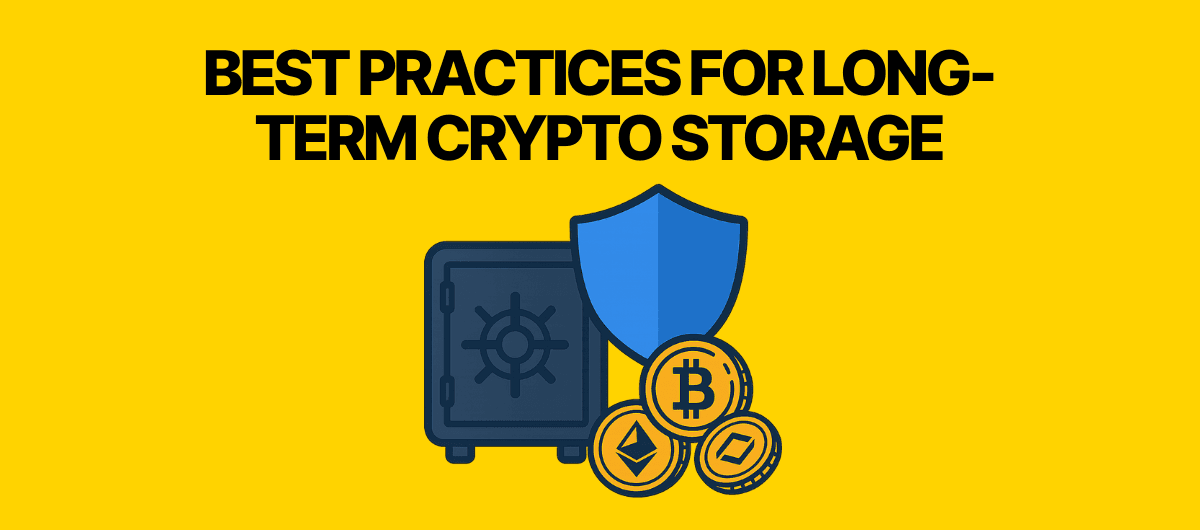What Are Private Keys & Seed Phrases? (2025 Beginner’s Guide)
Understand what private keys and seed phrases are, why they’re crucial for your crypto security, and how to keep them safe in 2025.

Hey, it’s Lanzo 👋
If you own crypto, you’ve probably heard the phrases “Not your keys, not your coins.”
But what does that actually mean?
In this guide, you’ll learn:
- What private keys and seed phrases actually are
- How they work together
- Why they’re the most important part of crypto ownership
- The biggest mistakes people make
- How to protect them in 2025
- Real-world examples of hacks and recoveries
- Tools to keep your keys safe forever
Let’s make sure you never lose access to your coins 👇
What Are Private Keys? 🔐
A private key is like your digital signature — a secret code that proves you own your crypto.
When you send crypto, your wallet uses this key to “sign” the transaction.
✅ It’s what gives you full control over your funds.
❌ If someone else gets it — they can move your coins instantly.
Think of it as your bank account password, except there’s no “forgot password” option.
⚡ Lanzo Tip: If you control your private keys, you control your crypto. If an exchange controls them — they control your crypto.
What Is a Seed Phrase? 🌱
A seed phrase (or recovery phrase) is a human-readable backup of your private keys — usually 12 or 24 random words.
Example:
“fish ladder moon credit village drift light pencil zebra oven gate axis”
Every wallet you create — whether it’s Ledger, MetaMask, or Trust Wallet — gives you this phrase.
It’s how you restore your wallet if your phone or hardware device is lost.
✅ Anyone with your seed phrase can restore your entire wallet.
❌ That’s why you never share it.
Why Private Keys and Seed Phrases Matter 🧠
Here’s the golden rule of crypto ownership:
Private key = Access
Seed phrase = Backup
If you lose both, your crypto is gone forever.
If someone else gets them, they can take your funds instantly.
That’s why exchanges like Bybit or Binance hold your keys for you, but it means you don’t have true control.
How They Work Together ⚙️
When you create a new wallet, your seed phrase generates your private key, and your private key creates your public address.
It works like this:
- You create a wallet
- Wallet gives you 12 or 24 words (seed phrase)
- Those words mathematically generate your private keys
- Your private keys generate your public wallet address
- People send funds to your address, but only your private key can unlock them
👉 It’s all math — no central server, no passwords, no human intervention.
Real-World Example 🔍
Imagine your Ledger Nano X breaks.
No problem — you buy a new one, enter your same seed phrase, and boom — your entire wallet is back.
But if a hacker gets those same words, they can do the same thing from anywhere.
That’s why security > convenience when it comes to your recovery phrase.
You can read more on how to protect it here:
The Biggest Mistakes Beginners Make ❌
- Taking screenshots of their seed phrase.
- Saving it in Notes or Google Drive.
- Typing it on websites or “verification forms.”
- Losing it and assuming exchanges can help.
- Sharing it during “support chats.”
⚠️ Lanzo Warning: No real crypto company will ever ask for your seed phrase — not even Ledger, Bybit, or Binance.
How to Keep Your Keys Safe in 2025 🛡️
✅ 1. Use a Hardware Wallet
Keep your private keys offline with devices like Ledger Nano X or Trezor.
Even if your computer is infected, your keys never leave the device.
✅ 2. Write It Down (Not Digitally)
Use pen and paper or a metal backup plate.
Store one copy in a secure place, like a safe or bank deposit box.
✅ 3. Use Multiple Backups
Make 2–3 physical copies and store them in different locations.
One for you, one for your backup plan.
✅ 4. Be Careful with “Recovery Services”
If someone offers to “help recover your wallet,” it’s a scam 99% of the time.
There are no legitimate recovery tools.
✅ 5. Educate Family or Trusted Contacts
Your loved ones should know where the backups are — in case something happens to you.
How to Check If You Truly Own Your Keys 🔍
Ask yourself this:
“If the exchange shuts down tomorrow, can I still access my crypto?”
If the answer is no, then you don’t truly own it.
The only wallets that give you full control are non-custodial wallets (where you hold your seed phrase).
TL;DR 📌
- Private key = unlocks your crypto
- Seed phrase = backup for your wallet
- Never share or store them online
- Use hardware wallets for real control
- No seed phrase = no access, ever
FAQ
Not directly. You can create a new wallet with a new seed phrase and transfer your funds there.
Start Protecting Your Crypto 🔒
Ledger Nano X
Keep your Bitcoin, Ethereum, and altcoins safe with the most trusted hardware wallet.
This is an affiliate link. If you buy, Lanzo may earn a commission at no extra cost to you.
Trade Securely with Bybit
Buy and trade crypto safely with Bybit’s proven platform and low fees.
This is an affiliate link. If you buy, Lanzo may earn a commission at no extra cost to you.
⚡ Lanzo Tip: Treat your seed phrase like gold. Lose it once — and it’s gone forever.
(This post contains affiliate links — supporting Lanzo at no extra cost to you.)
You might also like
Not financial advice. Based on public sources. As of today.


